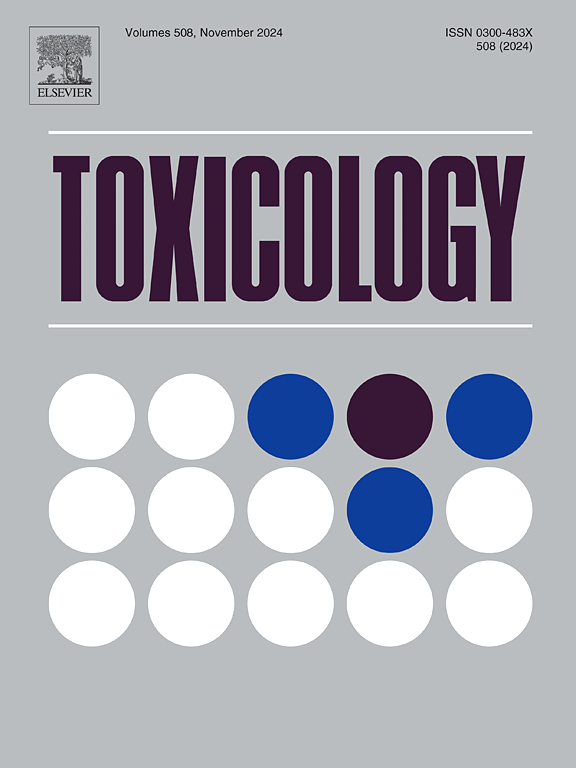Bisphenol A and its potential mechanism of action for reproductive toxicity
IF 4.8
3区 医学
Q1 PHARMACOLOGY & PHARMACY
引用次数: 0
Abstract
Bisphenol A (BPA) is an organic synthetic chemical used worldwide. Billions of pounds of BPA are produced annually through industrial processes to be used in commercial products, making human exposure to BPA ubiquitous. Concerns have been raised due to the potential adverse health effects of BPA, specifically in vulnerable populations, such as pregnant persons and children. BPA is an endocrine-disrupting chemical, and through this function has been linked to reproductive toxicity. We review BPA’s historical and current use, health and safety concerns and regulations, sources of exposure, and evidence for male and female reproductive toxicity. Evidence from epidemiological and animal studies idenfity that low- and high-exposure levels of BPA (prenatal, postnatal and adulthood exposure) can adversely affect male and female fertility and reproductive organs. While the cause of BPA-induced reproductive toxicity is not fully understood, we discuss BPA’s estrogenic and androgenic activity, and its ability to disrupt the hypothalamic-pituitary-gonadal axis as a potential associated mechanism. There are significant differences in tolerable daily intakes of BPA set by global agencies, making interpretation of previous and emerging research findings challenging and inconsistent. Although BPA is deemed toxic by some government agencies, most do not currently consider it a health risk due to low populational exposure levels. However, we highlight evidence that even at acute, low exposure, BPA can adversely affect reproductive function. We recommend continuing research into the adverse effects of BPA on human health and revisiting the regulatory measures of BPA to limit exposure and promote public awareness of its potential to cause reproductive toxicity.
双酚A及其生殖毒性的潜在作用机制。
双酚A (BPA)是一种世界范围内使用的有机合成化学品。每年有数十亿磅的双酚a在工业生产过程中被用于商业产品,使人类无处不在地接触到双酚a。由于双酚a对健康的潜在不利影响,特别是对孕妇和儿童等弱势群体的潜在不利影响,已引起人们的关注。双酚a是一种干扰内分泌的化学物质,通过这种功能与生殖毒性有关。我们回顾了BPA的历史和目前的使用,健康和安全问题和法规,暴露来源,以及男性和女性生殖毒性的证据。来自流行病学和动物研究的证据表明,低水平和高水平的双酚a暴露(产前、产后和成年暴露)会对男性和女性的生育能力和生殖器官产生不利影响。虽然BPA引起生殖毒性的原因尚不完全清楚,但我们讨论了BPA的雌激素和雄激素活性,以及它破坏下丘脑-垂体-性腺轴的能力,这是一种潜在的相关机制。全球机构设定的双酚a每日可耐受摄入量存在显著差异,这使得对以往和新出现的研究结果的解释具有挑战性和不一致性。尽管一些政府机构认为双酚a有毒,但由于人群接触水平低,大多数人目前并不认为它会对健康构成威胁。然而,我们强调证据表明,即使在急性,低暴露,双酚a也会对生殖功能产生不利影响。我们建议继续研究双酚a对人类健康的不利影响,并重新审视双酚a的监管措施,以限制暴露并提高公众对其可能导致生殖毒性的认识。
本文章由计算机程序翻译,如有差异,请以英文原文为准。
求助全文
约1分钟内获得全文
求助全文
来源期刊

Toxicology
医学-毒理学
CiteScore
7.80
自引率
4.40%
发文量
222
审稿时长
23 days
期刊介绍:
Toxicology is an international, peer-reviewed journal that publishes only the highest quality original scientific research and critical reviews describing hypothesis-based investigations into mechanisms of toxicity associated with exposures to xenobiotic chemicals, particularly as it relates to human health. In this respect "mechanisms" is defined on both the macro (e.g. physiological, biological, kinetic, species, sex, etc.) and molecular (genomic, transcriptomic, metabolic, etc.) scale. Emphasis is placed on findings that identify novel hazards and that can be extrapolated to exposures and mechanisms that are relevant to estimating human risk. Toxicology also publishes brief communications, personal commentaries and opinion articles, as well as concise expert reviews on contemporary topics. All research and review articles published in Toxicology are subject to rigorous peer review. Authors are asked to contact the Editor-in-Chief prior to submitting review articles or commentaries for consideration for publication in Toxicology.
 求助内容:
求助内容: 应助结果提醒方式:
应助结果提醒方式:


